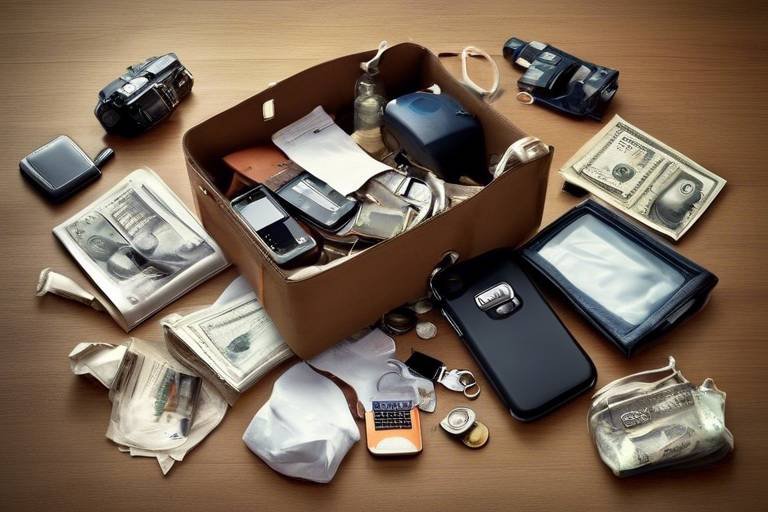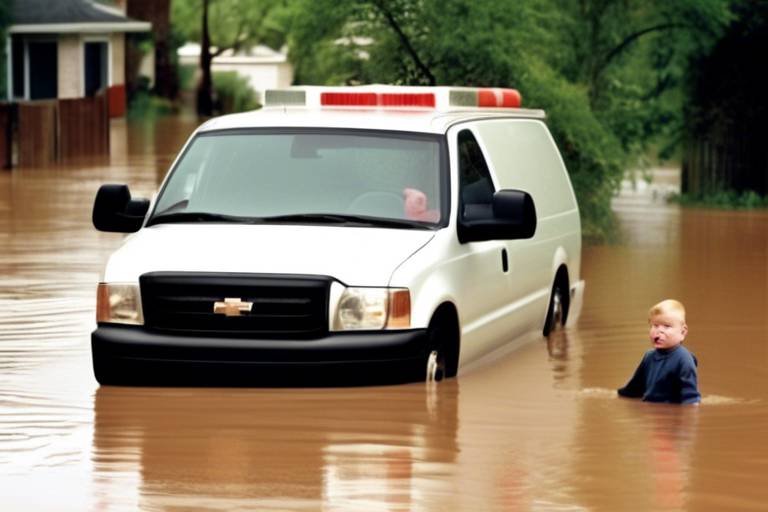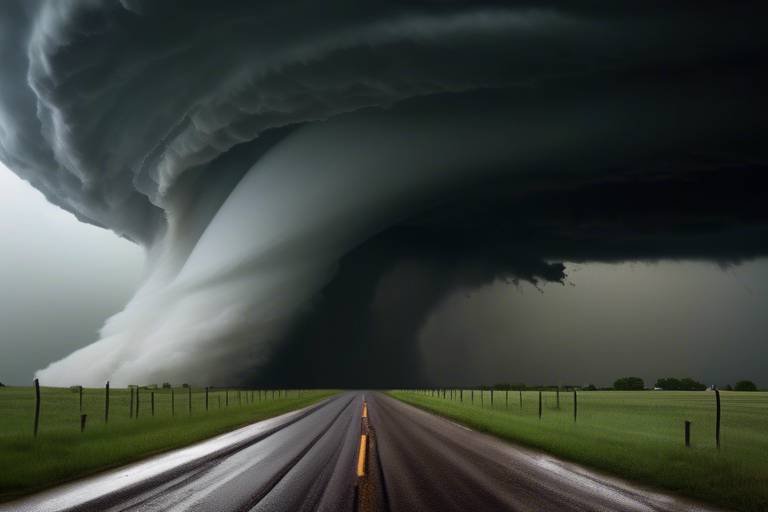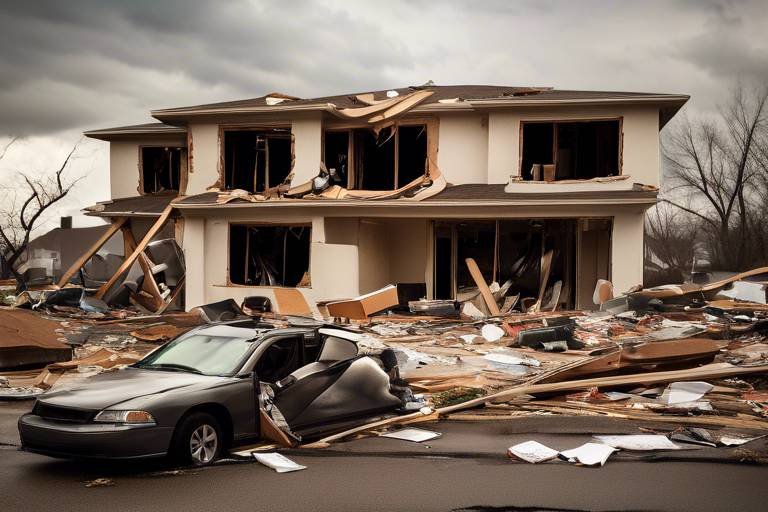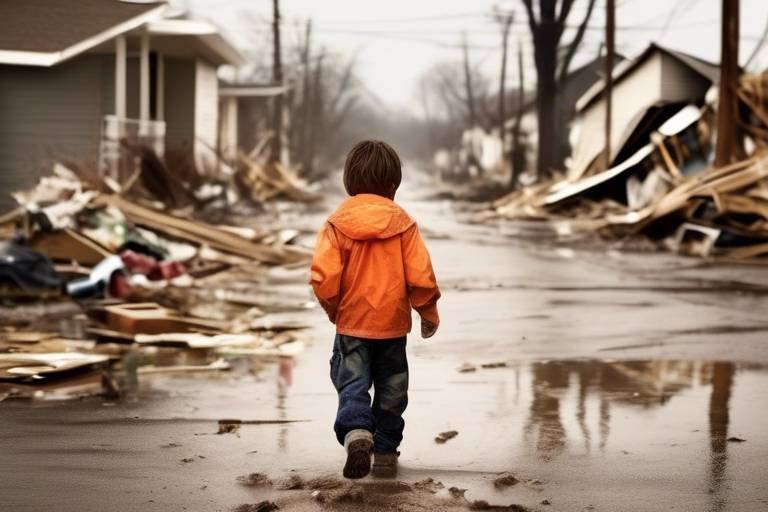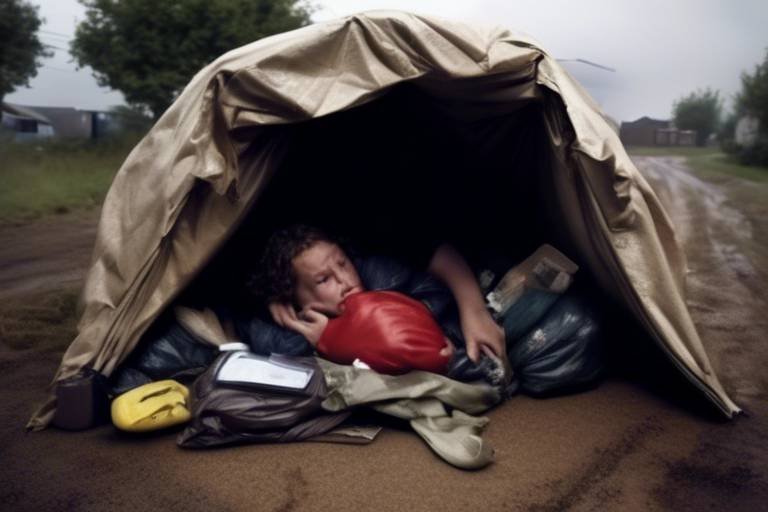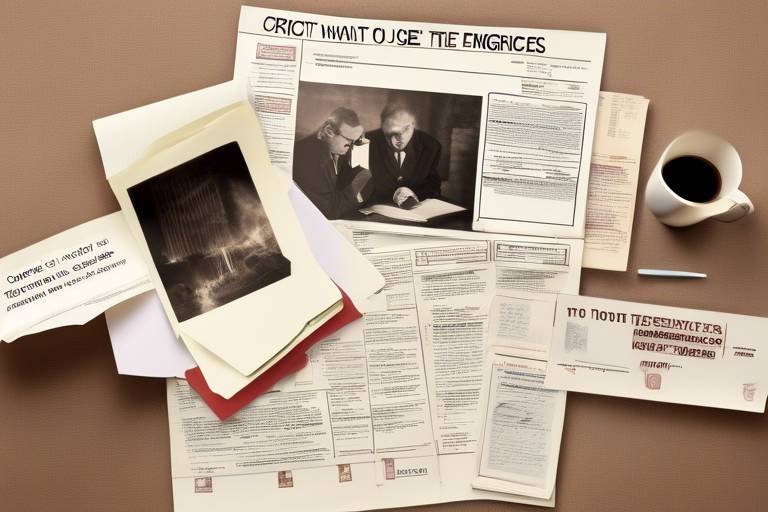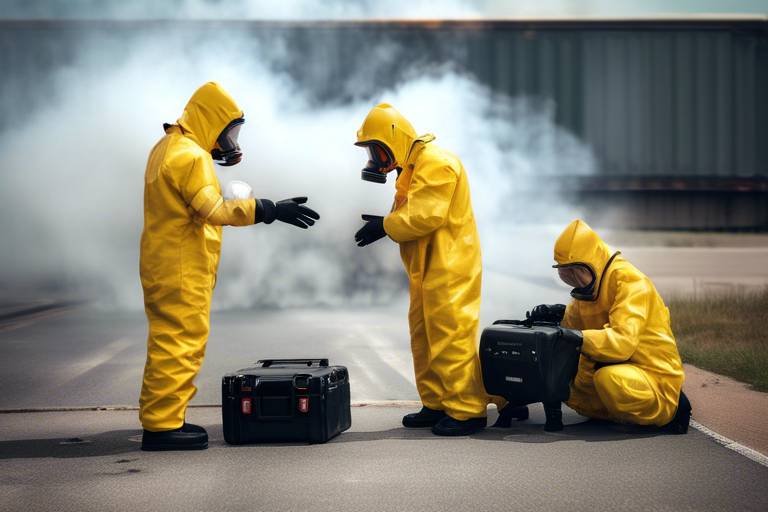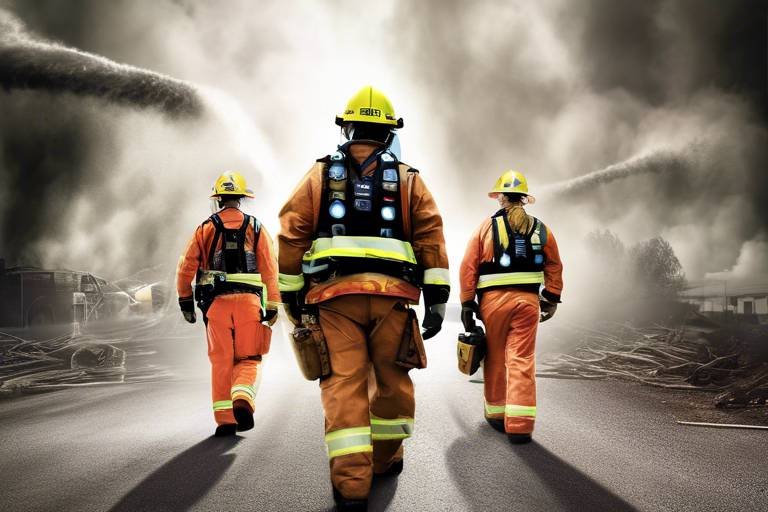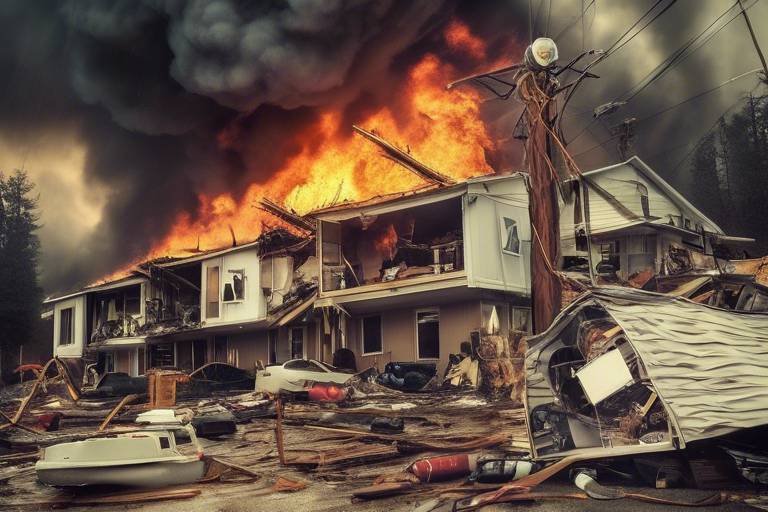How to Keep Your Valuables Safe During a Disaster?
When disaster strikes, whether it's a natural calamity like a hurricane, flood, or fire, or even a man-made crisis, the last thing you want is to lose your cherished possessions. Imagine standing in the aftermath, surrounded by chaos, and realizing that your most valuable items are gone forever. The thought alone can send chills down your spine! But fear not; with the right strategies and preparations, you can ensure that your valuables remain safe and sound. This article explores effective strategies and tips for safeguarding your valuables in the event of a disaster, ensuring their protection and your peace of mind.
Understanding what items are most valuable to you is crucial. Take a moment to think about what you would grab if you had to evacuate in a hurry. Is it your grandmother's heirloom necklace, your laptop filled with irreplaceable memories, or perhaps your collection of rare coins? By identifying and prioritizing your possessions, you can better protect them during emergencies. Start by making a list of your valuables, categorizing them based on their importance and emotional value. This will not only help you know what to focus on during a disaster but also assist in creating a solid emergency plan.
A well-structured emergency plan is vital for disaster preparedness. Think of it as your roadmap through the storm. Your plan should detail how to secure your valuables and ensure easy access during an emergency. Start by designating a safe meeting spot for your family, where everyone knows to gather in case of evacuation. Next, outline the steps for securing your valuables; this might include storing them in a specific location or using protective containers. Don’t forget to practice your plan! Just like a fire drill, rehearsing your emergency response can make all the difference when the real deal happens.
Choosing a secure location for your valuables is essential. Think of your home as a fortress, and every fortress needs a stronghold. Identify safe spots within your home where you can store important items. This could be a fireproof safe in a closet or a hidden compartment in your furniture. If you want to take it a step further, consider external secure facilities like safety deposit boxes at your bank. These options provide an added layer of protection against theft and damage.
Investing in appropriate containers can protect your valuables from fire and water damage. Imagine your precious items wrapped snugly in a fireproof and waterproof cocoon, safe from the elements. Look for containers that are rated for both fire and water resistance. Some popular options include:
- Fireproof safes
- Waterproof bags
- Fire-resistant document boxes
By using these containers, you can rest easy knowing that your belongings are shielded from potential disasters.
Keeping an updated inventory of your valuables helps in assessing what needs protection. It’s like having a treasure map that guides you through your possessions. To conduct regular checks, take time every six months to review your list and update it as needed. This might include adding new items or removing things you no longer have. Keeping accurate records not only helps you stay organized but also makes it easier to file insurance claims if needed.
Incorporating technology can enhance the security of your valuables. Think of it as having a digital watchdog keeping an eye out for you. There are various technological solutions available, including alarms, surveillance systems, and smart locks that can deter theft and damage. Consider investing in a home security system that alerts you to any unusual activity. Additionally, apps that track your inventory can be incredibly useful for quick access to your list of valuables.
Understanding insurance options is crucial for protecting your valuables. It’s like having a safety net that catches you when you fall. There are several types of insurance available, including homeowners insurance, renters insurance, and specialized policies for high-value items. Make sure to review your policy to ensure your items are adequately covered. This can save you a lot of heartache and financial stress in the event of a disaster.
Selecting the appropriate insurance policy for your valuables can be complex. It’s essential to consider factors such as the total value of your items, the types of disasters covered, and any deductibles that may apply. Don't hesitate to consult with an insurance agent to ensure you understand your options and find a policy that offers comprehensive coverage tailored to your needs.
Proper documentation is key to filing insurance claims successfully. Think of it as creating a scrapbook of your possessions. To effectively document your valuables, take clear photographs and keep receipts for each item. Store this information in a secure location, such as a cloud service or an external hard drive, so you can access it easily when needed. By being proactive in documenting your items, you can ensure a smooth claims process should the need arise.
Q: What should I do first in a disaster?
A: Prioritize your safety and the safety of your loved ones. Once safe, focus on securing your valuables.
Q: How can I keep my digital valuables safe?
A: Use cloud storage and backup your important files regularly to protect them from physical disasters.
Q: Are there specific insurance policies for collectibles?
A: Yes, many insurers offer specialized policies for collectibles and high-value items, providing tailored coverage.
By taking these steps and being prepared, you can ensure that your valuables are protected during a disaster, allowing you to focus on what truly matters—your safety and the safety of your loved ones.
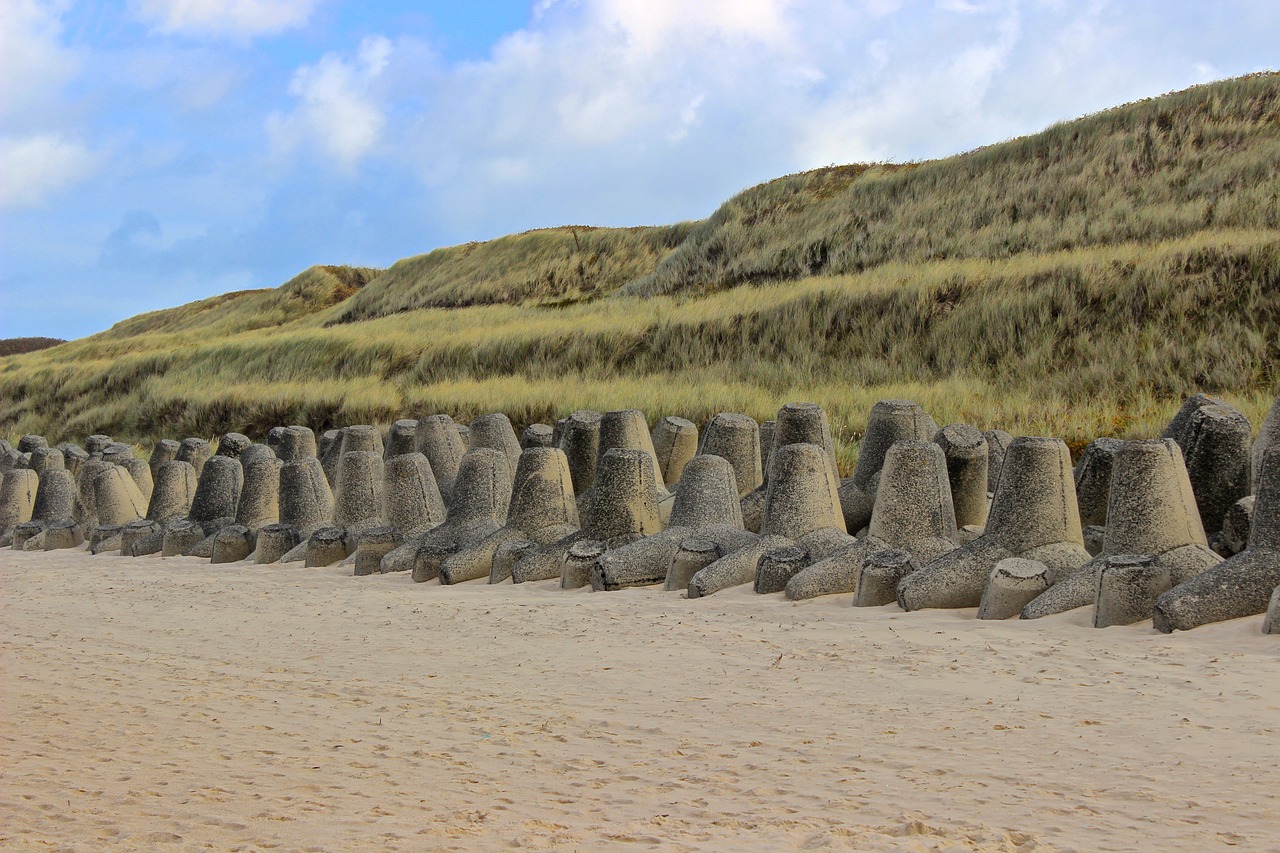
Assessing Your Valuables
When it comes to protecting your belongings during a disaster, the first step is to understand what items are most valuable to you. This isn't just about monetary worth; it’s about the sentimental value and irreplaceability of certain possessions. Think about it: what would you be heartbroken to lose? Is it that family heirloom passed down through generations, or perhaps your child's first artwork? By identifying these items, you can prioritize them for better protection.
Start by walking through your home and making a mental (or physical) list of your valuables. Consider grouping them into categories such as:
- Sentimental Items: Family photos, heirlooms, and personal mementos.
- Financial Assets: Jewelry, important documents, and collectibles.
- Essential Electronics: Laptops, hard drives, and other tech that hold critical information.
Once you've identified your valuables, it’s time to assess their physical condition and security needs. Are they currently stored in a safe location? Do they require special care, like humidity control or protective cases? Taking the time to evaluate these factors can make a world of difference. For example, if you have old photographs that are crucial to your family history, consider digitizing them to ensure they’re preserved even if something happens to the originals.
Next, think about how you might prioritize these items in the event of an emergency. If time is of the essence, which items would you grab first? Create a mental checklist or even a physical one, so you’re prepared to act quickly. This can be compared to having a fire drill; when you know what to do, you can respond more effectively.
Finally, it’s essential to keep an updated inventory of your valuables. This not only helps you remember what you have but also aids in recovery and insurance claims if needed. You can create a simple table to keep track of your items, their estimated value, and their location. Here’s an example:
| Item | Estimated Value | Location |
|---|---|---|
| Grandmother's Necklace | $1,000 | Jewelry Box |
| Family Photos | Sentimental | Living Room Shelf |
| Computer Hard Drive | $500 | Office Desk |
By taking the time to assess your valuables, you not only ensure their protection but also grant yourself peace of mind. In uncertain times, knowing what you have and where it is can be a comforting thought. So, roll up your sleeves, take stock of your treasures, and prepare for whatever may come your way!

Creating an Emergency Plan
Creating an emergency plan is like drawing a roadmap for safety; it guides you through the chaos that a disaster can bring. Picture this: a storm is brewing outside, the winds are howling, and you suddenly realize you haven’t prepared for the worst. Panic sets in, and your mind races. But what if you had a clear plan laid out beforehand? That’s the power of preparation! A well-structured emergency plan not only helps you secure your valuables but also ensures that you and your loved ones can navigate through the storm with confidence.
So, how do you start crafting this essential plan? First, gather your family and discuss the potential disasters that could affect your area, whether it's floods, fires, or earthquakes. Understanding the risks is the first step in creating a robust strategy. Talk about what you would do in each scenario, and don’t forget to include your pets in the conversation! Everyone should know the plan, as teamwork can make a world of difference during a crisis.
Next, consider the logistics: where will you go if you need to evacuate? Identify safe locations, such as a friend’s house or a designated shelter. Make sure everyone knows how to get there, and keep a list of emergency contacts handy. It's like having a backup plan for your backup plan! You might even want to create a communication tree—a simple diagram that shows who to contact and in what order, ensuring no one gets left out in the chaos.
| Disaster Type | Evacuation Location | Emergency Contacts |
|---|---|---|
| Flood | Friend's House | John: 555-1234 |
| Fire | Local Shelter | Mary: 555-5678 |
| Earthquake | Family Member | Alex: 555-8765 |
Now, let’s talk about securing your valuables. As part of your emergency plan, designate a specific area in your home where all important items will be stored. This could be a fireproof safe or a waterproof container, but the key is consistency. When disaster strikes, you don’t want to waste precious time searching for important documents or cherished possessions. Having a “go-bag” ready to grab on your way out can also be a lifesaver, filled with essentials like cash, IDs, and irreplaceable items.
And here’s a tip: practice makes perfect! Schedule regular drills with your family to ensure everyone knows the plan inside and out. It’s one thing to talk about it, but actually going through the motions can help everyone feel more at ease when the real deal happens. Just like fire drills at school, these practices can save lives and protect your valuables.
Ultimately, the goal of your emergency plan is to create a sense of security and preparedness. By taking the time to develop a comprehensive strategy, you’re not just protecting your belongings; you’re ensuring the safety and well-being of everyone you love. Remember, when disaster strikes, it’s not just about survival; it’s about having peace of mind knowing you’ve done your best to prepare.

Establishing a Safe Location
When it comes to safeguarding your valuables during a disaster, choosing a safe location is paramount. Think of your valuables as the treasures they are; they deserve a fortress, not just a drawer or a closet. You want to ensure that, in the face of chaos, your most cherished items are tucked away in a place that maximizes their protection. So, where do you start? First, evaluate your living space. Does your home have a basement, a safe room, or perhaps a secure storage unit nearby? Each of these options has its pros and cons.
For instance, a basement can be a great option during a tornado or flood, but it might not be ideal for fire protection. On the other hand, a safe room can provide excellent security against intruders but may not be the best during natural disasters like hurricanes. The key is to think about the types of disasters that are most likely to affect your area and choose locations accordingly. Here are some factors to consider:
- Accessibility: Ensure that your chosen location is easily accessible during an emergency. You don’t want to be fumbling around trying to find your valuables when time is of the essence.
- Protection: Evaluate how well the location can protect against various threats, including fire, water, and theft.
- Space: Make sure there’s enough room to store all your valuables without cramming them into tight spaces, which could lead to damage.
Additionally, consider the use of external secure facilities. Renting a safety deposit box at a bank or a secure storage unit can be a wise decision, especially for items of significant value or irreplaceable family heirlooms. These facilities are typically equipped with advanced security measures, including surveillance cameras and alarm systems, providing an extra layer of protection.
Ultimately, the goal is to create an environment where your valuables feel safe and secure, even amidst a disaster. Don’t hesitate to revisit your chosen locations regularly, especially if you acquire new items or if your living situation changes. Remember, the best defense is a good offense, and being proactive about your valuables' safety is the smartest strategy you can adopt.

Using Fireproof and Waterproof Containers
This article explores effective strategies and tips for safeguarding your valuables in the event of a disaster, ensuring their protection and your peace of mind.
Understanding what items are most valuable to you is crucial. This section will guide you through identifying and prioritizing your possessions for better protection during emergencies.
A well-structured emergency plan is vital for disaster preparedness. This section will cover how to develop a plan that includes securing your valuables and ensuring easy access during an emergency.
Choosing a secure location for your valuables is essential. This subsection will discuss safe spots within your home or external secure facilities for optimal protection.
When it comes to protecting your most cherished items, investing in fireproof and waterproof containers is a game changer. Imagine losing your family heirlooms or important documents in a flash due to a sudden fire or flood. That's where these specialized containers come into play, acting as your first line of defense against the unpredictable forces of nature.
Fireproof containers are designed to withstand extreme temperatures, ensuring that your valuables remain intact even in the most devastating situations. On the other hand, waterproof containers protect against water damage, which can occur during floods or leaks. By combining these two features, you can achieve a level of safety that gives you peace of mind.
Here are some key considerations when selecting the right containers for your valuables:
- Material: Look for containers made from durable materials such as steel or high-quality plastic that can withstand harsh conditions.
- Size: Choose a size that accommodates your items without being too bulky. It should be easy to store yet spacious enough for your essentials.
- Certification: Always check for certifications such as UL (Underwriters Laboratories) ratings for fire resistance and IP ratings for waterproofing.
Additionally, consider the placement of these containers within your home. Ideally, they should be kept in a location that is easily accessible yet secure. For example, a sturdy fireproof safe hidden in a closet or a waterproof container stored in a high, dry area can be excellent choices. Remember, the goal is to ensure that your valuables are not only protected but also easy to grab in case of an emergency.
In conclusion, using fireproof and waterproof containers is a proactive step in safeguarding your valuables. They serve as a shield against the unexpected, allowing you to focus on what truly matters during a disaster—your safety and the safety of your loved ones.
Understanding insurance options is crucial for protecting your valuables. This section will discuss the types of insurance available and how to ensure your items are adequately covered.
Selecting the appropriate insurance policy for your valuables can be complex. This subsection will guide you through the factors to consider when choosing a policy that offers comprehensive coverage.
Proper documentation is key to filing insurance claims successfully. This section will outline how to effectively document your valuables, including photographs and receipts, to ensure a smooth claims process.
Q: What types of valuables should I prioritize for protection?
A: Focus on items that hold significant personal or financial value, such as jewelry, important documents, electronics, and family heirlooms.
Q: How often should I check my emergency plan?
A: It's a good practice to review your emergency plan at least once a year or whenever you acquire new valuables.
Q: Are there specific brands recommended for fireproof and waterproof containers?
A: While there are many reputable brands, look for those with high customer ratings and certifications for fire and water resistance.
Q: What should I do if my valuables are damaged in a disaster?
A: Document the damage thoroughly with photographs and contact your insurance provider to initiate a claim.

Regular Inventory Checks
When it comes to safeguarding your valuables, conducting is not just a good idea—it's essential. Imagine trying to find your grandmother's heirloom necklace during a disaster, only to realize it was misplaced months ago. By keeping an updated inventory, you not only know what you have but also where it is, which can save you a lot of heartache when time is of the essence.
So, how often should you perform these checks? Ideally, you should do a thorough inventory at least once a year. However, if you acquire new items or make significant changes in your life—like moving or downsizing—it's wise to reassess your inventory. This practice will help you prioritize what is truly valuable to you and ensure that you are taking the necessary steps to protect those items.
To make your inventory process more efficient, consider the following steps:
- Document Each Item: Write down a detailed description of each valuable item, including its condition, estimated value, and any unique characteristics that make it special.
- Take Photos: A picture is worth a thousand words! Snap clear, high-resolution photos of your items from different angles. This will be especially helpful for insurance claims.
- Store Receipts: Keep receipts or any proof of purchase in a safe place. These documents can be crucial for verifying ownership and value.
- Utilize Inventory Apps: In today's digital age, consider using inventory management apps that allow you to catalog your items easily. Many of these apps even let you upload photos and store important documents securely.
After you've conducted your inventory check, don’t forget to review and update your emergency plan accordingly. If you’ve acquired new valuables or if the value of existing items has changed, make sure to adjust your plans for their protection. Remember, the goal is to ensure that in the event of a disaster, you can quickly access and secure your most cherished possessions.
By staying proactive with your inventory, you can enjoy peace of mind knowing that your valuables are not only accounted for but also well-protected. It's like having a safety net that ensures you won’t be caught off guard when life throws a curveball your way!
1. How often should I update my inventory?
It's recommended to update your inventory at least once a year, or whenever you acquire new valuables or make significant changes in your life.
2. What should I include in my inventory?
Include a detailed description of each item, its condition, estimated value, photographs, and any receipts or proof of purchase.
3. Are there apps to help with inventory management?
Yes! There are several apps available that can help you catalog your items, store photos, and keep important documents secure.
4. How can I ensure my valuables are protected during a disaster?
In addition to regular inventory checks, create an emergency plan, store items in fireproof and waterproof containers, and consider using technology for added security.

Utilizing Technology for Security
In today's fast-paced world, the integration of technology into our daily lives has become more than just a convenience; it has transformed the way we safeguard our most cherished possessions. Imagine having a personal security team that works around the clock, ensuring your valuables are protected even when you're not home. This is precisely what modern technology can offer. From smart alarms to surveillance cameras, there are numerous tools available that can enhance the security of your valuables during a disaster.
First and foremost, consider investing in a smart security system. These systems not only alert you to potential threats but also allow you to monitor your home remotely through your smartphone. With features such as motion detection and real-time notifications, you can keep an eye on your valuables no matter where you are. Some advanced systems even provide facial recognition technology, ensuring that only authorized individuals can access your home.
Another innovative solution is the use of smart locks. Unlike traditional locks, smart locks can be controlled via your smartphone, offering keyless entry and the ability to grant temporary access to trusted individuals. This means you can provide access to family members or friends during an emergency without having to physically hand over a key. Furthermore, many smart locks come with built-in alarms that will alert you if someone attempts to tamper with them.
Additionally, utilizing surveillance cameras can significantly deter potential thieves. Modern cameras come equipped with high-definition video, night vision, and even two-way audio, allowing you to communicate with anyone on your property. Placing these cameras strategically around your home can provide you with a comprehensive view of your surroundings. Many systems also offer cloud storage options, ensuring that your footage is safe even if the physical camera is damaged.
Moreover, consider incorporating environmental sensors into your security setup. These devices can detect smoke, carbon monoxide, and even flooding, alerting you to potential disasters before they escalate. By integrating these sensors with your smart security system, you can receive immediate notifications and take action to protect your valuables. For instance, if a water leak is detected, you can quickly move your important items to a safer location.
Lastly, don't underestimate the power of home automation systems. These systems allow you to control various aspects of your home, such as lighting and temperature, from your smartphone. By simulating your presence at home through automated lighting, you can deter burglars who might be monitoring your property. Additionally, setting up automated alerts for unusual activity can provide peace of mind, knowing that your valuables are being monitored even when you’re away.
In summary, leveraging technology for security not only protects your valuables but also enhances your overall peace of mind. By investing in smart security systems, surveillance cameras, smart locks, environmental sensors, and home automation, you can create a multi-layered approach to safeguarding your possessions. Remember, the goal is to make it as difficult as possible for potential threats to access your valuables, and technology is your ally in achieving this.
- What is the best type of security system for home use? The best type of security system depends on your specific needs, but a combination of smart alarms, cameras, and locks is generally recommended for comprehensive protection.
- Can I monitor my security system remotely? Yes, most modern security systems allow remote monitoring through smartphone apps, giving you real-time access to your home’s security status.
- Are smart locks safe? Smart locks can be very safe if installed correctly and used with strong passwords. Look for models with advanced security features like two-factor authentication.
- What should I do if my security system alerts me? If your security system alerts you, it’s important to assess the situation carefully. If you suspect a break-in, contact local authorities immediately.
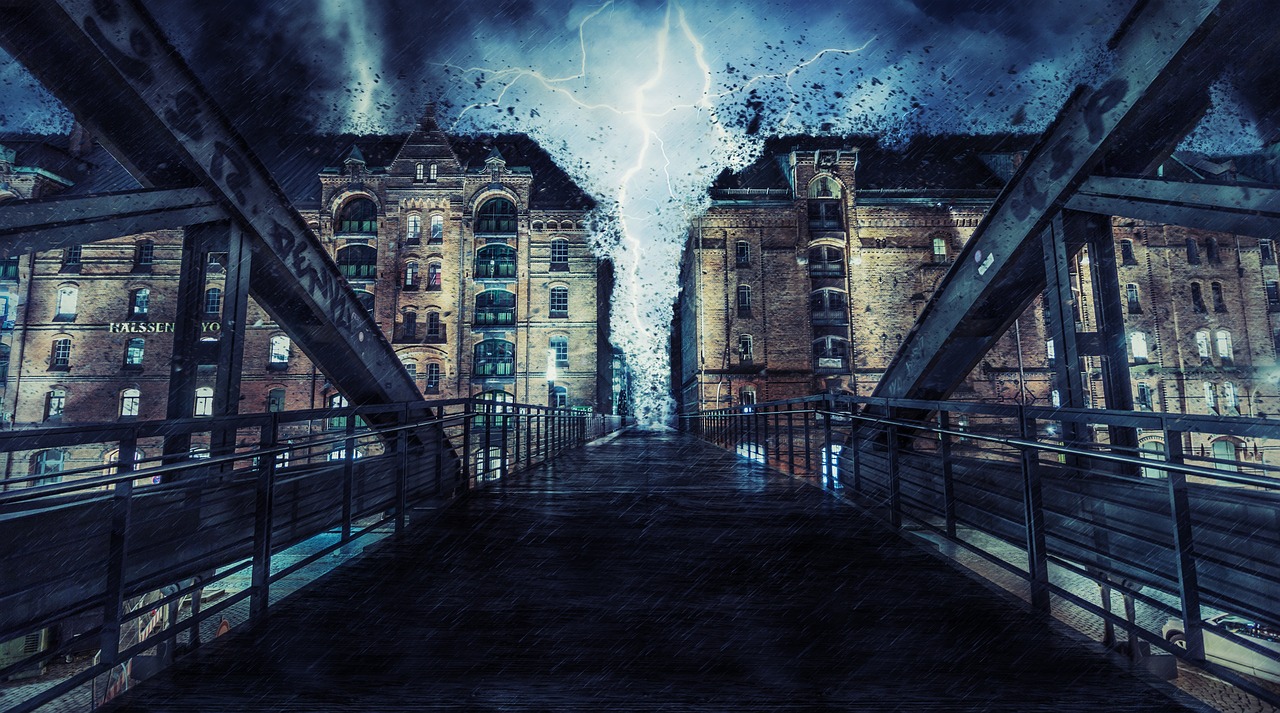
Insurance Considerations
When it comes to protecting your valuables, understanding insurance options is not just a good idea; it’s essential. Imagine a scenario where a disaster strikes, and you’re left scrambling to save your cherished possessions. Without the right insurance coverage, you could find yourself in a tough spot, both emotionally and financially. So, what do you need to know about insuring your valuables? Let's dive into the key considerations that can make all the difference.
First and foremost, it’s crucial to recognize that not all insurance policies are created equal. Different types of insurance cover different risks, and knowing what you need is half the battle. For instance, homeowners insurance typically covers personal property, but it may not fully protect high-value items like jewelry, art, or collectibles. In some cases, you might need a separate policy or a rider to ensure these items are adequately covered. This is where understanding your specific needs comes into play.
Additionally, it’s wise to evaluate the value of your possessions. Create a comprehensive list of your valuables, including their estimated worth. This will not only help you determine the necessary coverage but will also make filing claims a smoother process later. Keep in mind that the value of items can fluctuate over time, so it’s essential to update your inventory regularly. You might even consider using a professional appraiser for high-value items to get an accurate assessment.
Another critical aspect is to review your policy limits. Many standard policies have limits on specific categories of items. For instance, your policy might cover only up to $1,500 for jewelry, which could be far less than what your collection is worth. Always check these limits and discuss them with your insurance agent. Sometimes, it’s possible to increase these limits for a nominal fee, providing you with peace of mind.
Finally, let’s talk about documentation. Properly documenting your valuables is essential for a successful insurance claim. This includes taking clear photographs, keeping receipts, and maintaining any appraisals. In the unfortunate event that you need to file a claim, having all this information readily available can expedite the process and increase your chances of receiving fair compensation.
- What types of insurance cover personal valuables?
Homeowners insurance typically covers personal property, but you may need additional coverage for high-value items. - How can I determine the value of my valuables?
Creating an inventory and consulting a professional appraiser can help you accurately assess the value of your possessions. - What should I do if my valuables exceed my policy limits?
You can discuss increasing your policy limits with your insurance agent to ensure adequate coverage. - How often should I update my inventory?
It’s recommended to review and update your inventory at least once a year or after any significant purchases.
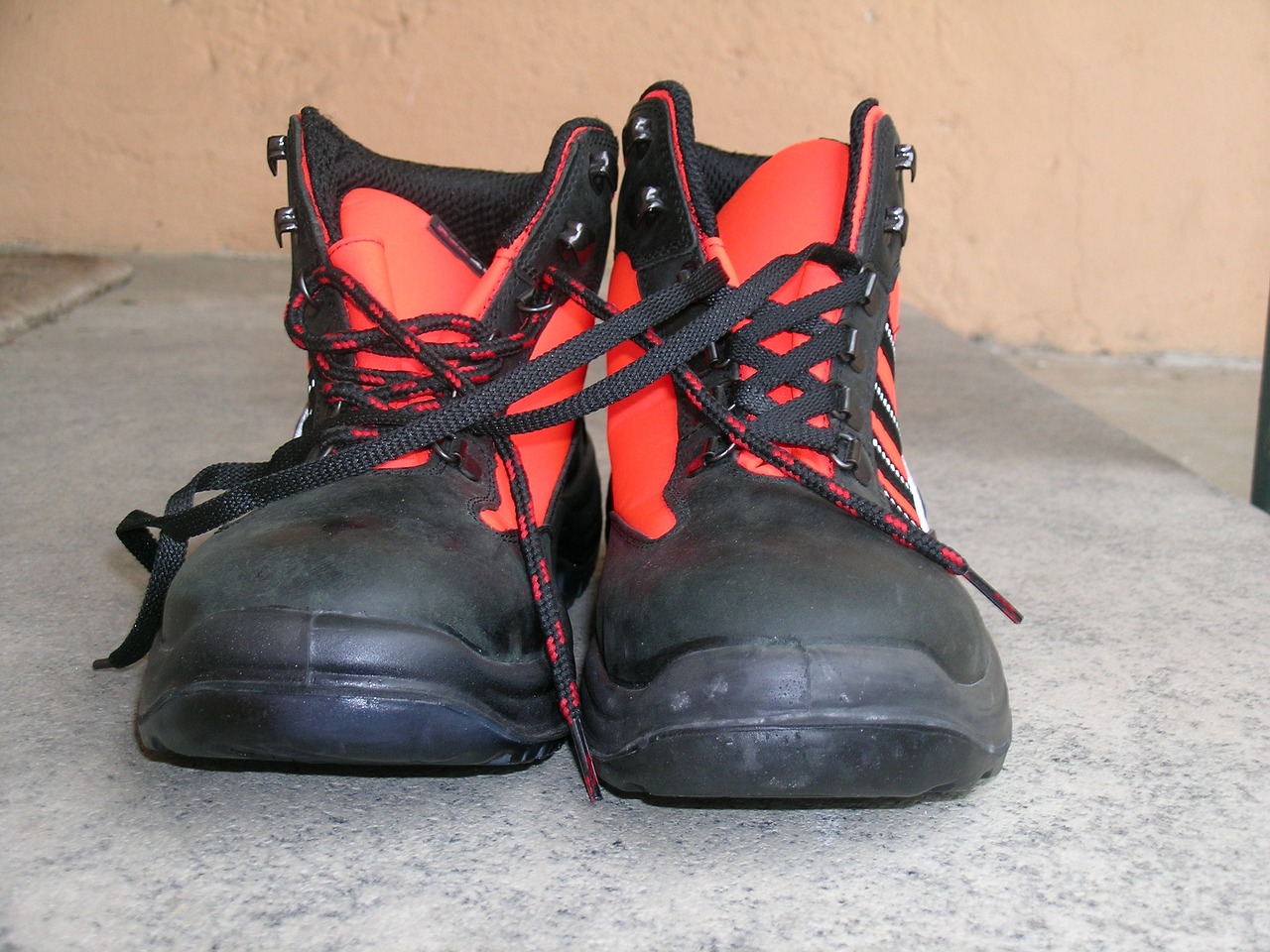
Choosing the Right Policy
When it comes to protecting your valuables, selecting the right insurance policy can feel like navigating a maze. With so many options available, it’s easy to feel overwhelmed. However, understanding a few key factors can simplify the process and help you make an informed decision. First and foremost, consider the **type of coverage** you need. Are you looking for a policy that covers only specific items, or do you want comprehensive coverage that includes a wider range of valuables? This distinction is crucial because it determines how much protection you’ll have in case of loss or damage.
Next, think about the **value of your items**. It’s essential to have a clear understanding of what your valuables are worth. This means not just sentimental value but also the market value. For instance, if you own a collection of rare coins or vintage jewelry, you’ll want to ensure that your policy reflects their true worth. Many insurance companies offer specialized policies for high-value items, which can provide better coverage than standard homeowner’s insurance.
Another important aspect to consider is the **deductible**. This is the amount you’ll need to pay out of pocket before the insurance kicks in. A higher deductible often means lower premiums, but it could also leave you vulnerable in the event of a disaster. It’s a balancing act: you want to find a deductible that you can afford while still getting adequate coverage. So, ask yourself, “How much can I realistically pay if something happens?”
Additionally, look into the **claims process** of the insurance provider. A policy is only as good as the company behind it. Research customer reviews and ratings to get a sense of how they handle claims. You don’t want to be left in a lurch when you need help the most. A company with a reputation for excellent customer service can make a world of difference during stressful times.
Lastly, don’t hesitate to ask questions. Speak with an insurance agent to clarify any doubts you may have. Here are a few questions you might consider asking:
- What types of disasters are covered under this policy?
- Are there specific exclusions I should be aware of?
- How do I update my policy if I acquire new valuables?
By taking the time to carefully evaluate these factors, you can choose an insurance policy that not only protects your valuables but also gives you peace of mind. Remember, your valuables are more than just items; they are memories and investments. Choosing the right policy is an essential step in safeguarding them for the future.
Q1: What types of valuables should I insure?
A1: It's wise to insure high-value items such as jewelry, art, collectibles, and electronics. Consider anything that holds significant monetary or sentimental value.
Q2: How can I determine the value of my items?
A2: You can determine the value of your items through appraisals, receipts, or by researching similar items online. Keeping an updated inventory is also helpful.
Q3: Will my homeowner's insurance cover my valuables?
A3: Homeowner's insurance may cover some valuables, but often there are limits. It's important to check your policy details and consider additional coverage if needed.
Q4: Can I add new items to my insurance policy easily?
A4: Yes, most insurance providers allow you to update your policy as you acquire new items. Just be sure to inform your agent to ensure they are covered.
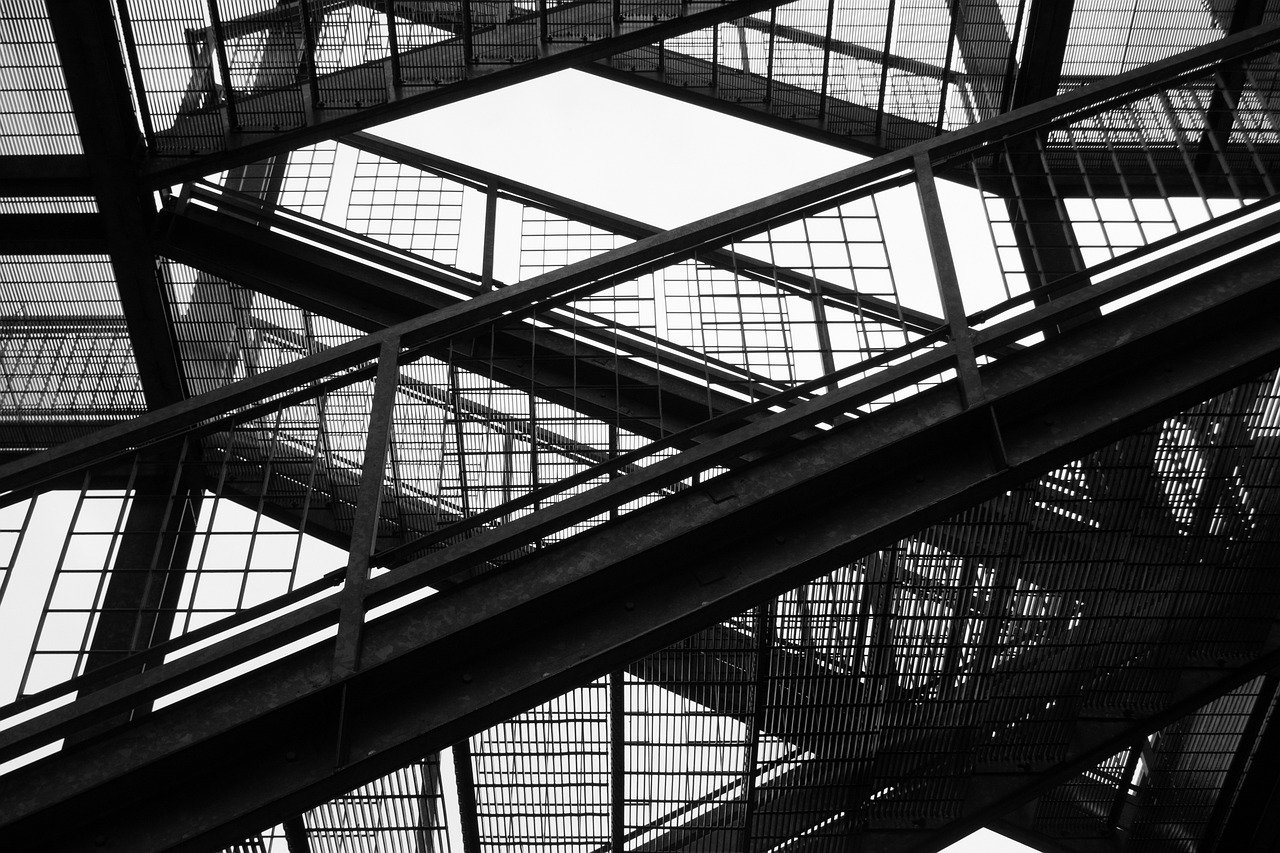
Documenting Your Valuables
When it comes to protecting your valuables, one of the most crucial steps is documenting them properly. Imagine you're in the middle of a disaster—your heart races, your mind is in a whirlwind, and the last thing you want to worry about is whether you can prove what you owned. Proper documentation acts as your safety net, ensuring that you can file insurance claims smoothly and recover from losses without additional headaches.
To start, consider creating a detailed inventory of your possessions. This inventory should include not just the items themselves but also pertinent details such as their purchase date, original value, and current estimated value. You might think, "Isn't that a lot of work?" but trust me, it's worth it. Having this information at your fingertips can save you time and stress later on.
Here are some essential elements to include in your inventory:
- Item Description: Clearly describe each item, including brand names, models, and unique features.
- Photographs: Take clear, high-resolution photos of each item. A picture is worth a thousand words, especially when it comes to insurance claims.
- Receipts and Proof of Purchase: Keep copies of receipts or any proof of purchase. If you can't find the original, a bank statement showing the transaction can also work.
- Serial Numbers: For electronics and appliances, record the serial numbers. This can be vital for identification.
Once you've compiled your inventory, consider storing it in multiple locations. Keep a digital copy in a secure cloud storage service, and also have a physical copy in a fireproof and waterproof container. This way, even if you lose access to your home or your computer, you'll still have a way to prove what you owned.
Another great idea is to periodically update your inventory. As you acquire new items or dispose of old ones, make it a habit to revisit your documentation. This can be as simple as setting a reminder on your phone every six months to review your list. By doing this, you ensure that your inventory remains accurate and reflective of your current possessions.
In conclusion, documenting your valuables is not just about keeping a list; it’s about creating a comprehensive safety net that can make a world of difference in stressful situations. When disaster strikes, you’ll be grateful you took the time to prepare.
Q: How often should I update my inventory?
A: It's a good idea to review and update your inventory at least once every six months or whenever you acquire new valuable items.
Q: What if I lose my documentation during a disaster?
A: Store a digital copy in a secure cloud service and keep a physical copy in a fireproof and waterproof container to minimize risk.
Q: Are photos really necessary for documentation?
A: Yes! Photos help provide proof of ownership and the condition of your items, which can be crucial for insurance claims.
Frequently Asked Questions
- What should I consider when assessing my valuables?
Start by identifying items that hold significant emotional or monetary value to you. Think about family heirlooms, important documents, and anything that would be difficult to replace. Prioritize these items based on their importance and vulnerability during disasters.
- How can I create an effective emergency plan?
Your emergency plan should include steps for securing your valuables. Make sure to designate a specific location where your most important items will be stored. Practice your plan regularly with your family so everyone knows what to do when disaster strikes.
- What is the best way to store valuables during a disaster?
Using fireproof and waterproof containers is a smart move. These containers can shield your valuables from fire and water damage, giving you peace of mind. Look for options that are both durable and easy to access in an emergency.
- How often should I check my inventory of valuables?
Regular inventory checks are essential! Aim to do this at least once a year or whenever you acquire new valuable items. Keeping an updated list helps you stay organized and ensures you know exactly what needs protection.
- What technological solutions can help protect my valuables?
Consider investing in security systems like alarms and surveillance cameras. These technologies can deter theft and give you real-time alerts if something goes wrong. Utilizing smart home technology can also enhance your overall security.
- What types of insurance should I consider for my valuables?
Look into homeowners or renters insurance, which typically covers personal property. Additionally, you might want to consider specialized insurance for high-value items like jewelry or art. Make sure to review your policy to ensure adequate coverage.
- How do I document my valuables for insurance purposes?
Take clear photographs of each item and keep receipts or appraisals. Create a detailed list that includes descriptions, values, and any relevant information. This documentation will be crucial for filing claims and proving ownership.

